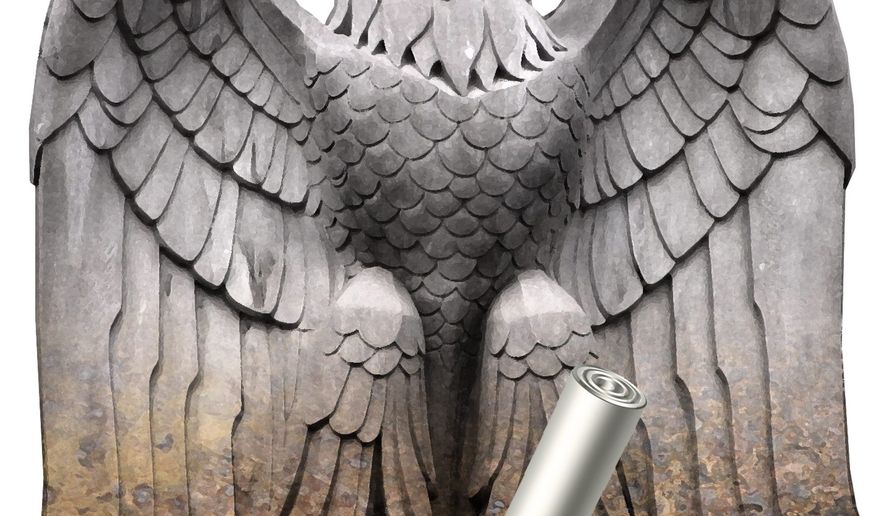OPINION:
Is the direct federal negotiation of drug prices a good idea? Consider the “non-interference clause” that currently prohibits such actions in Medicare Part D — the federal program that subsidizes prescription drugs for seniors. Surprise. The non-interference clause was written by Sens. Ted Kennedy and Tom Daschle — and it’s a good idea.
Nobody doubts that President Trump and his team are shrewd negotiators. But the sorts of “negotiations” that the president refers to in Medicare have nothing in common with haggling over a real estate deal. Specifically, his desire to repeal the non-interference clause would result in a sharp increase in Medicare drug prices and a substantial decline in patient choice.
The non-interference clause empowers private insurers to negotiate drug prices with manufacturers and prohibits government officials from getting involved. So far, private insurers that offer Part D plans have had great success in keeping pharmaceutical prices down. In fact, the Congressional Budget Office observed that Part D plans have “secured rebates somewhat larger than the average rebates observed in commercial health plans.”
Just look to the program’s success.
Medicare Part D’s cost reductions over the past decade and a half are impressive. Between 2004 and 2013, Part D cost an extraordinary $349 billion less than initial estimates. And premiums for the program are roughly half of the government’s original projections.
These unprecedented results are largely due to Part D’s market-based structure. Beneficiaries are free to choose from a slate of private drug coverage plans, forcing insurers to compete to offer the best options at the lowest price to American seniors.
This plethora of options is partially why seniors are so satisfied with the Part D program. Nearly 9 in 10 enrollees are happy with their Part D plan. And a full 90 percent of enrollees say that their plan is easy to use and that their prescription spending would be higher without Part D coverage.
Doing away with the non-interference clause would disrupt the program.
For starters, the move “would have a negligible effect on federal spending.” In a report from 2009, the Congressional Budget Office (CBO) reiterated this view, explaining that such a reform would “have little, if any, effect on [drug] prices.”
In fact, allowing the feds to negotiate drug prices under Part D likely would have a negative effect on the program. According to the CBO, to achieve any significant savings, the government would have to follow through on its threats of “not allowing [certain] drug[s] to be prescribed.”
In other words, the government would drop some drugs from Medicare’s coverage to save money.
That would be a raw deal for patients. Medicare Part D provides exceptional access to prescription drugs. The average Part D plan provides access to more than 95 percent of the top 200 Medicare Part D Drugs.
Should Part D plans drop medicines from their formularies to cut costs, Medicare Part D as we know it would cease to exist. And this coverage disruption would send America’s 44 million Part D enrollees scrambling to maintain access to the medications they need.
Patients who rely on drugs that are dropped from their Part D formularies will be forced to pay for them out-of-pocket. Others could be forced onto new therapies entirely.
The end result will be grim. Facing higher out-of-pocket spending, some patients could abandon their treatment regimens. According to a study from the University of Pennsylvania, 90 percent of cancer patients adhered to their prescription when out-of-pocket costs were just $10. But when that expense jumped between $100 to $500, 32 percent of patients abandoned their oral cancer therapies.
And when patients stop taking their medications, their conditions worsen and overall health care costs rise. That’s thanks to increased hospitalizations, emergency room visits and ambulance transportation.
In other words, the president’s reform would backfire — threatening patients and sending health expenditures through the roof.
And as for “drugs being cheaper in Europe,” consider this: Almost 90 percent of the prescription medicines used in the United States are generic drugs — and they’re less expensive here at home than across the pond. “Facts,” as John Adams said, “are pesky things.”
• Peter J. Pitts, a former FDA associate commissioner, is president of the Center for Medicine in the Public Interest. Merrill Matthews is a resident scholar with the Institute for Policy Innovation.




Please read our comment policy before commenting.